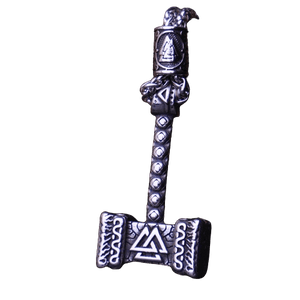Samhain: Origins and Symbols of the Celtic Ancestor Festival
- min of reading
Summary :

Nordic Wolf Celtic Ring
£26.55

Wolf Head Necklace
£26.55

Celtic Entwined Ring
£30.15

Celtic Triskel Bracelet
£26.55
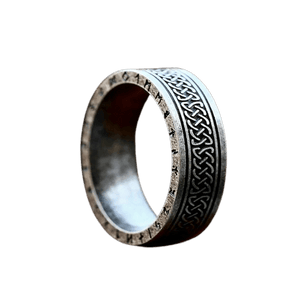
Viking Rune Ring
£30.15
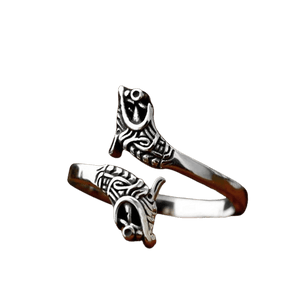
Celtic Wolf Ring
£26.55
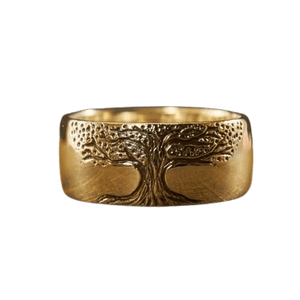
Tree of Life Ring
£26.55
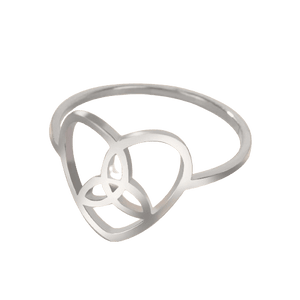
Trique Heart Ring
£26.55
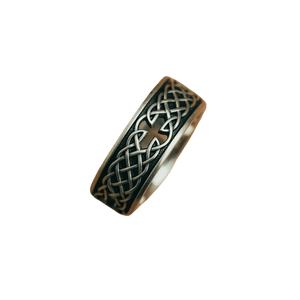
Celtic Ring
£26.55
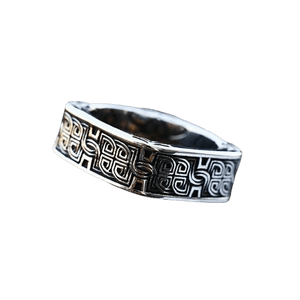
Celtic Ring
£26.55

Claddagh and Triskel Ring
£26.55
Samhain is a very important festival in the Celtic calendar. It marks the end of summer and the beginning of the new year. This celebration, with pre-Christian roots, has greatly influenced the culture of the Celtic peoples.
Despite changes over time, Samhain continues to inspire many modern holidays, including Halloween.
Key takeaways:
- Samhain is an ancient Celtic festival celebrated at the end of summer.
- This celebration marks the beginning of the new year in the Celtic calendar.
- Samhain's pre-Christian roots have deeply influenced the culture and traditions of the Celtic peoples
- Samhain has evolved over the centuries, but continues to inspire modern celebrations like Halloween
- The festival of Samhain is imbued with a strong spiritual dimension and ancestral beliefs.
The Ancestral Story of Samhain in Celtic Culture
Samhain is a very important holiday in the Celtic calendar . It comes from the mythology and traditions of the Druids . Before Christianity, it marked the beginning of winter, a time when the worlds of the living and the dead came closer together.
The pre-Christian roots of the celebration
The Celts saw Samhain as a time to commune with the afterlife. The Druids , guardians of Celtic wisdom, organized these festivities. They led purification rituals and offered them to the ancestral spirits.
The importance of the Celtic calendar
The Celtic calendar placed Samhain at the center. It was based on nature and the seasons. This period was seen as a transition, allowing one to get closer to ancestors and supernatural forces.
The role of druids in celebrations
The Druids were the leaders of these Samhain celebrations. They led the rituals and interpreted the omens. Their role was essential in keeping tradition and spirituality alive.
"Samhain was a crucial celebration for the Celts, where the connection with their ancestors and the invisible forces of the cosmos was strengthened."
The Spiritual Meaning of Ancestor's Day
Samhain, the Celtic festival of ancestors, is more than a festival. It has great spiritual significance. It is at the heart of Celtic spirituality and the cycle of life and death .
For the Celts, Samhain was a time of joy and connection with ancestors. They communicated with the spirits of the deceased, honoring and comforting them. This belief showed that death is not the end, but a part of life.
"Samhain was seen as a time when the veil between the world of the living and the dead was thinned, allowing for dialogue with the souls of the ancestors."
The Celts saw Samhain as a time to remember their origins. They celebrated their roots and strengthened ties with their ancestors. It was a time of reflection on life and death, and the importance of the past.
Today, Samhain retains this deep meaning. It shows the importance of roots and connection with the afterlife for the Celts. This holiday invites us to honor our roots, connect with our ancestors and reflect on our place in the cycle of life and death .
The Veil Between Worlds: Beliefs and Traditions
On Samhain night, the veil between the living and the spirit world is very thin. This belief, as old as Celtic culture, allows for unique rituals. They aim to communicate with the afterlife and to protect oneself magically.
Communication with the beyond
The Celts believed that during Samhain they could speak to their ancestors. They performed divination rituals to try to contact them. The goal was to receive their advice and blessings.
Protection rituals
To protect themselves from negative energies, the Celts organized magical protection rituals . They invoked deities and wore amulets. These sacred objects protected them from negative influences.
Offerings to the spirits
Samhain was also a time of ritual offerings to ancestral spirits. The Celts would leave food and drink for them. They hoped to gain their favor and goodwill for the following year.
| Celtic Beliefs | Ritual Practices |
|---|---|
| Spirit World | Divination and communication rituals |
| Magical protection | Invocations, amulets and protection rituals |
| Ritual offerings | Food, Drink and Spirit Gifts |
"During Samhain, the Celts believed that the veil between our world and the afterlife became so thin that they could communicate with their deceased ancestors."
Traditional Symbols of Samhain
The festival of Samhain, celebrated in the Celtic tradition, is rich in ancestral symbols. Every aspect of this celebration is imbued with these symbols. Among the most emblematic emblems are the carved pumpkin , the Samhain fires , the apple and the cauldron .
The carved pumpkin , or "Jack-o'-lantern," is a well-known symbol of Samhain. In the past, turnips or beets were used. But the pumpkin, with its round shape and bright orange color, has become the icon of the holiday. The carving of terrifying faces into these gourds represents the belief that spirits are likely to haunt the living on this sacred night.
Samhain fires have a deep meaning. They are lit to illuminate the night and chase away the darkness. They symbolize the passage from light to darkness, from life to death. These fires were a central part of the celebrations, allowing the druids to communicate with the afterlife and perform purification rituals.
The apple , the autumn fruit par excellence, embodies fertility, abundance and rebirth. In Celtic traditions, it was often associated with divination and knowledge of ancestors. Apple -related rites, such as bobbing (a game of catching apples floating in water), were very common during Samhain festivities.
Finally, the cauldron has major symbolic importance. Considered a sacred element, it represents transformation, purification and rebirth. During Samhain celebrations, the cauldron was used to prepare ritual dishes and to welcome the spirits of the ancestors.
These ancestral symbols, rooted in Celtic culture, continue to shape the traditions and beliefs associated with the festival of Samhain. They transmit a rich heritage imbued with spirituality.
Samhain Night Rituals and Ceremonies
Samhain night is very special in Celtic tradition. It is marked by unique rituals and ceremonies. The magic circle is a sacred space where the world of the living and the spirit world meet. Druids, experts in Samhain ceremony , help to create this circle. They carefully delimit it and invoke ancestral forces.
Celtic invocations are crucial in these rituals. They allow communication with ancestors and nature spirits. These sacred songs create an atmosphere of deep spiritual connection.
The ritual banquet is an essential part of Samhain. People gather to honor the dead and share a meal. This feast of the dead symbolizes the unity of the community and the connection with the spirits of the dead. This ancient tradition continues to be celebrated in many Celtic regions.
"Samhain night is a time of communion with the afterlife, where the living and the dead meet in an ancestral ritual."
The Evolution of Samhain Through the Centuries
The Celtic festival of Samhain has undergone a fascinating evolution over the centuries. It has crossed cultures and beliefs. In the past, it was a pagan festival marking the beginning of winter. With the arrival of Christianity in Europe, it was Christianized.
The Christianization of Samhain gave birth to All Saints' Day . This Christian tradition honors saints and the souls of the deceased. However, many pagan elements of Samhain survived into All Saints' Day . This shows the richness of this cultural fusion.
The tradition of Halloween originated in the United States. It draws on the Celtic roots of Samhain and the European traditions of All Saints ' Day. Today, Halloween is a popular holiday around the world. It mixes pagan and Christian aspects.
Since the 1960s, neopagan movements have rediscovered Samhain. They seek to revive the rituals and symbols of this Celtic festival. Their goal is to reconnect with the spiritual roots of their ancestors.
The legacy of Samhain continues to manifest itself through the centuries. It reinvents itself and adapts to different eras and cultures. From the Christian All Saints ' Day to modern Halloween, including neopaganism , this ancestral festival retains its richness and deep meaning.
Costumes and Disguises: Origins and Symbolism
The festival of Samhain was very important for the Celts. Celtic costumes and ritual masks had a great role. They showed the symbolism of colors and their depth.
Protective masks
The Celts believed that on Samhain night, the worlds of the living and the dead merged. Ritual masks protected them from spirits and supernatural forces. They also allowed them to communicate with the afterlife.
These masks often represented totemic animals, deities or ancestors. They gave their wearers an aura of mystery and power.
Traditional colours
The symbolism of colors was very important in Samhain costumes. Black symbolized death and mourning. Red represented blood, fire and vitality.
White symbolized purity and communication with the afterlife. Green, the color of nature and fertility, was also widely used.
These Celtic costumes and ritual masks allowed the Celts to experience the spirit of Samhain. They connected with their ancestors and celebrated life and death.
Ritual Cuisine and Sacred Foods
At Samhain, ritual food is very important. Foods like Samhain bread , colcannon , and barm brack are made with love. They are made to honor the ancestors and spirits of the afterlife.
Samhain bread is a round, spicy cake. It represents the sun and the cycle of the seasons. It is baked over a wood fire to connect ancestors to the earth. Objects are hidden in it to predict good luck for the year.
- Colcannon is a dish of potatoes, kale and butter. It symbolizes abundance and prosperity.
- Barm brack is a dried fruit cake. Objects are hidden in it to predict the future.
These sacred dishes are essential for Samhain. They create a connection between the living and the ancestors. Their preparation and sharing are key moments to celebrate Celtic traditions.
| Ritual Dish | Symbolic Meaning | Traditional Ingredients |
|---|---|---|
| Samhain Bread | Sun, cycle of seasons | Flour, spices, hidden objects |
| Colcannon | Abundance, prosperity | Potatoes, kale, butter |
| Barm Brack | Prediction of the future | Dried fruits, symbolic objects |
“Samhain ritual food is the tangible link between our ancestors and us. Each bite reminds us of our heritage and our connection to the afterlife.”
The Influence of Samhain on Modern Culture
Samhain is not just a memory of the past. This Celtic festival has deeply marked our modern culture. It has left a visible legacy in many traditions today.
Heritage in contemporary celebrations
Samhain traditions have been adopted by many communities. Festivals such as Halloween in the United States and All Saints' Day in France are inspired by Samhain. Pumpkins, costumes, and protective rituals have become central to these celebrations.
Modern adaptations of ancient rituals
Samhain practices have been reinvented by the neopagan and Wiccan movements. They honor ancestors and communicate with the afterlife. Their celebration of the cycle of life and death is an adaptation of ancestral traditions .
FAQ
What is Samhain and where does this Celtic celebration come from?
Samhain is a Celtic festival marking the end of summer and the beginning of the new year. It has pre-Christian roots and is very important in Celtic culture and spirituality.
How important was the Celtic calendar to the festival of Samhain?
The Celtic calendar , with its festivals such as Samhain, was crucial to the Celts. This period was seen as a time of transition. The veil between the world of the living and the world of the dead was thinning.
What was the role of the Druids in Samhain celebrations?
Druids were essential in the Samhain rituals. They served as a bridge between the living and the spirits. They led the ceremonies and invocations.
What was the spiritual dimension of the Samhain festival for the Celts?
Samhain was a deep spiritual festival for the Celts. It was linked to ancestor worship and the cycle of life and death . It was a time of communication with the afterlife and recognition of the connection between the living and the dead.
What were the beliefs and traditions associated with the thinning of the veil between the worlds during Samhain?
The Celts believed that the veil between the world of the living and the spirit world thinned during Samhain. They practiced protective rituals, offerings to the spirits, and divination practices.
What are the main traditional symbols associated with the festival of Samhain?
The iconic symbols of Samhain are the carved pumpkin , the Samhain fires , the apple , and the cauldron . Each has a symbolic meaning in this ancient Celtic celebration.
How were the rituals and ceremonies of Samhain night performed?
The Celts held elaborate rituals on Samhain night. They prepared a sacred circle, made traditional invocations, and held a feast of the dead in honor of the ancestors.
How has Samhain evolved over the centuries?
Samhain has undergone many transformations, notably with the Christianization which gave birth to All Saints' Day. But, the festival has also experienced a renewed interest among modern neopagan movements which seek to reconnect with these ancestral traditions .
What is the origin and meaning of the costumes and disguises associated with Samhain?
Masks and disguises were used to protect against spirits and supernatural forces. Colors such as black, orange and red had special symbolism in this celebration.
What were the ritual foods and dishes consumed during the Samhain festival?
Samhain cuisine included symbolic foods such as Samhain bread , colcannon and barm brack . These dishes were an integral part of the celebrations.

